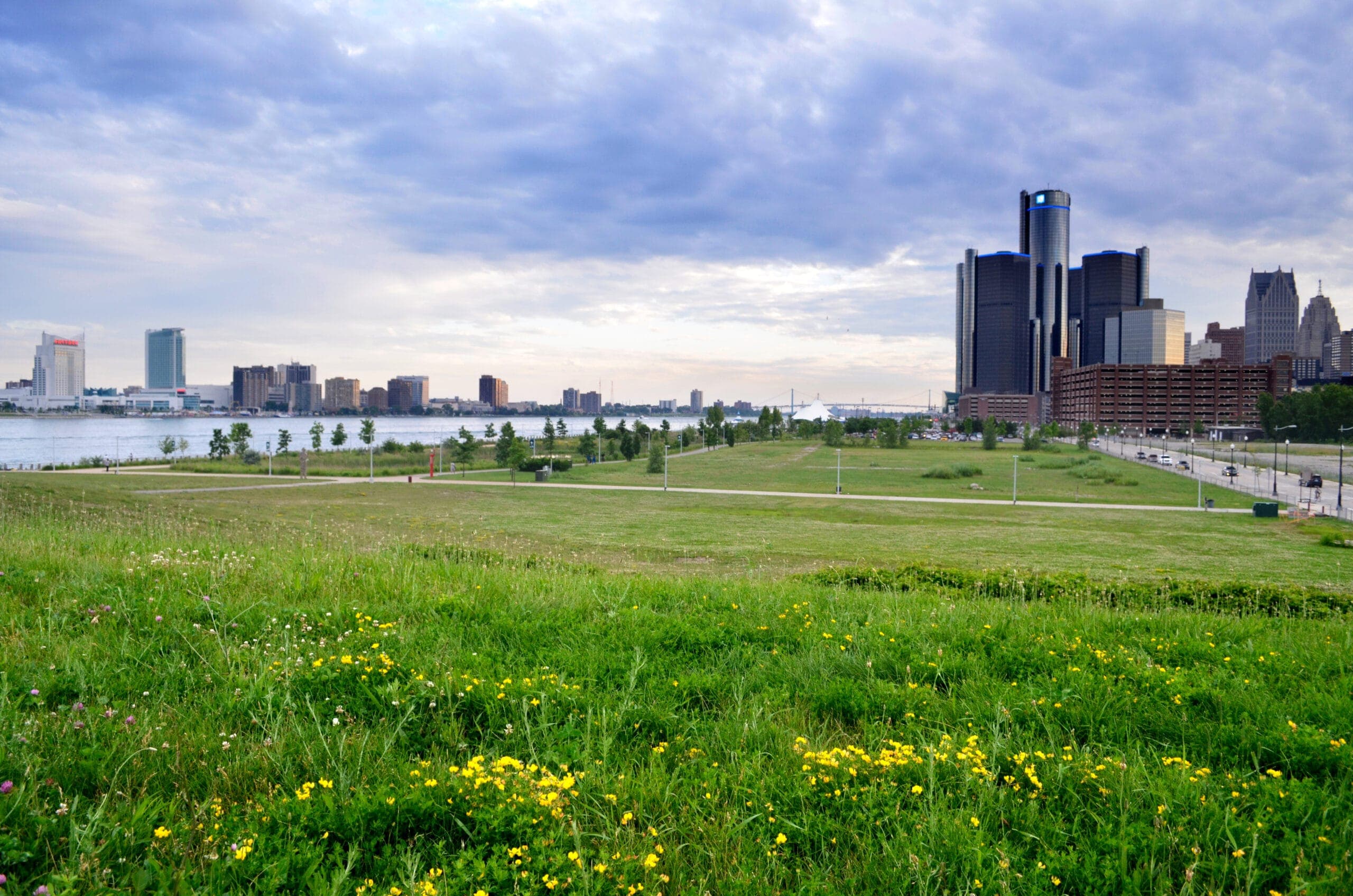
News
By Jamie Zouras, April 17, 2024
As we celebrate Earth Day (April 22) and National Fair Housing Month (all of April), it's a perfect time to reflect on the intersectionality of these two important themes and explore how designing communities that are dense, walkable, transit-oriented, and green can lead to places that are not only more sustainable but also more affordable for all.

The link between climate resilience and affordable housing
From extreme weather events to record-breaking temps (March was the 10th straight hottest month on record) to rising sea levels, the effects of climate change are becoming increasingly apparent, underscoring the urgent need for action. At the same time, ensuring access to safe, energy-efficient, and affordable housing for all remains a pressing challenge, particularly in the face of escalating housing costs and growing inequality.
Fortunately, there is a solution that addresses both of these challenges: designing communities that prioritize walkability, transit options and accessibility, green space, and affordability. By embracing the principles of smart growth and utilizing zoning reform tools, we can create neighborhoods that not only reduce greenhouse gas emissions and mitigate climate risks but also provide housing options that are within reach for individuals and families of all income levels.
Dense and walkable communities
By clustering housing, businesses, services, and amenities in close proximity, we can reduce the need for car travel, minimize carbon emissions, and foster a sense of community and connection among residents. Walkable neighborhoods encourage active transportation modes such as walking and rolling, promoting physical health and reducing reliance on personal vehicles powered by fossil fuels.
Transit-oriented development and green infrastructure
By locating housing and commercial development near public transportation hubs, we can increase transit ridership, reduce traffic congestion, and lower emissions from privately owned vehicles. Transit-oriented development also improves access to jobs, education, healthcare, and other essential services and community assets. Green spaces such as parks, urban forests, green roofs, rain gardens, and permeable pavement help mitigate the urban heat island effect, manage stormwater runoff, improve air and water quality, and enhance biodiversity.
Migration and climate change: Advocating for development out of harm's way
Climate migration refers to the movement of people from one location to another due to the impacts of climate change (including rising sea levels, increased flooding, wildfires, droughts, etc.). Climate migration can occur within countries or across international borders, and many communities are beginning to experience it now, with implications felt for both sending and receiving communities. As people’s homes are increasingly impacted by extreme weather events, insurance markets shrink, and irregular weather patterns threaten livelihoods like agriculture that depend on natural resources, and as the demand for housing continues to outpace supply, people are forced to relocate and or get priced out of their neighborhoods. Displacement and demographic shifts resulting from climate-related factors can disrupt long-standing social networks, cultural traditions, and community cohesion, leading to social tensions, conflicts, and loss of community identity, especially for communities that have been impacted by redlining, predatory lending, and other discriminatory land use practices.
Understanding and addressing the link between climate and housing is essential for advancing equitable and inclusive responses to the impacts of climate change in communities around the world.
As we commemorate Earth Day and National Fair Housing Month, let us recommit ourselves to the twin goals of climate resilience and affordable housing for all.
- Start a conversation with your local planners and commissioners—or even your nearest neighbor—to discuss how zoning laws can be reformed to support mixed-use development and to ensure future development in climate-risky areas is not permitted
- Research local weatherization assistance programs to lower both your carbon footprint and your energy bills
- Join a local pro-housing organization to say “yes!” to diverse housing types
- Support local initiatives and projects such as community gardens, bike-sharing programs, affordable housing developments, or renewable energy projects
Together, we can build and advocate for a future where sustainability and equity go hand in hand.
Related News

© 2025 Smart Growth America. All rights reserved
Site By3Lane Marketing












